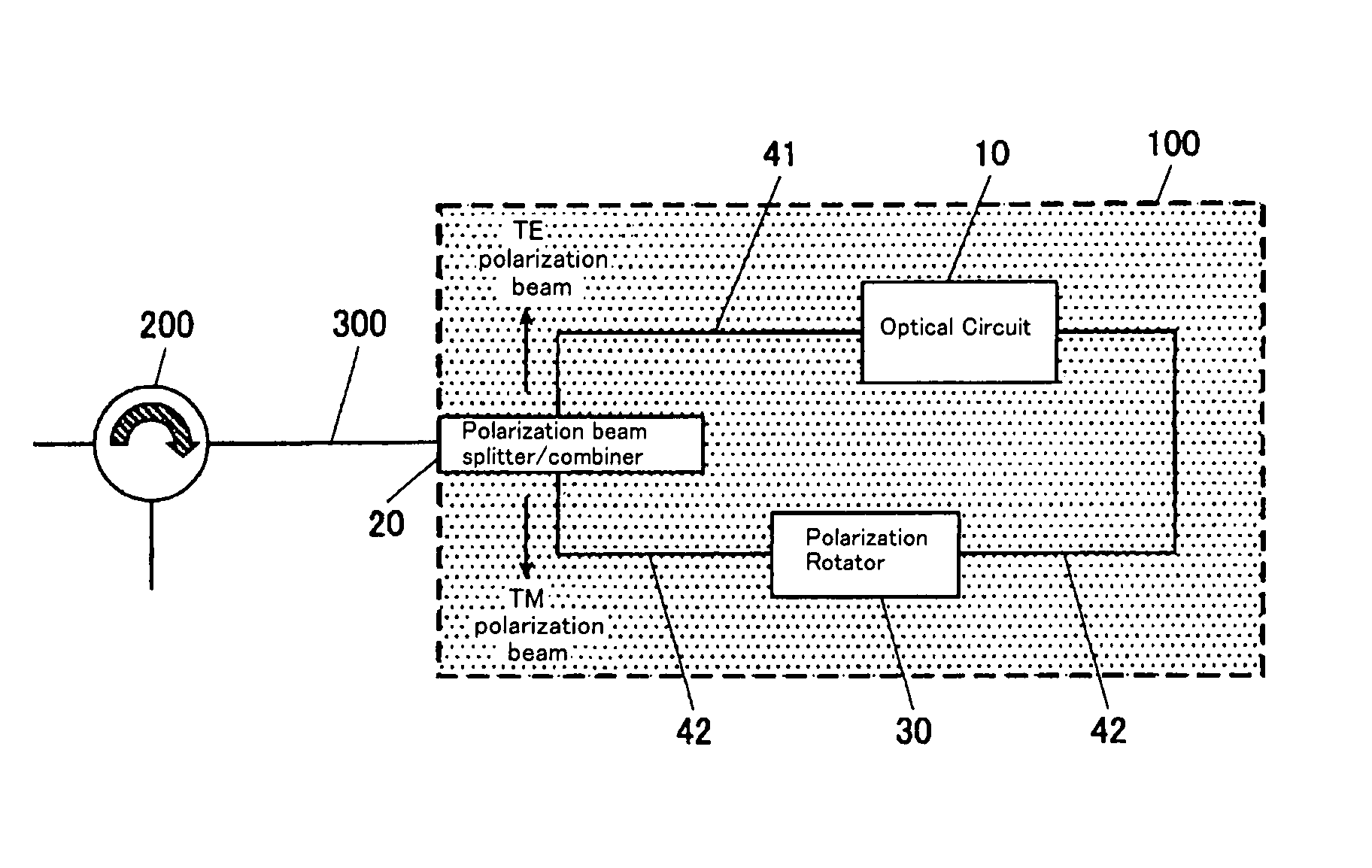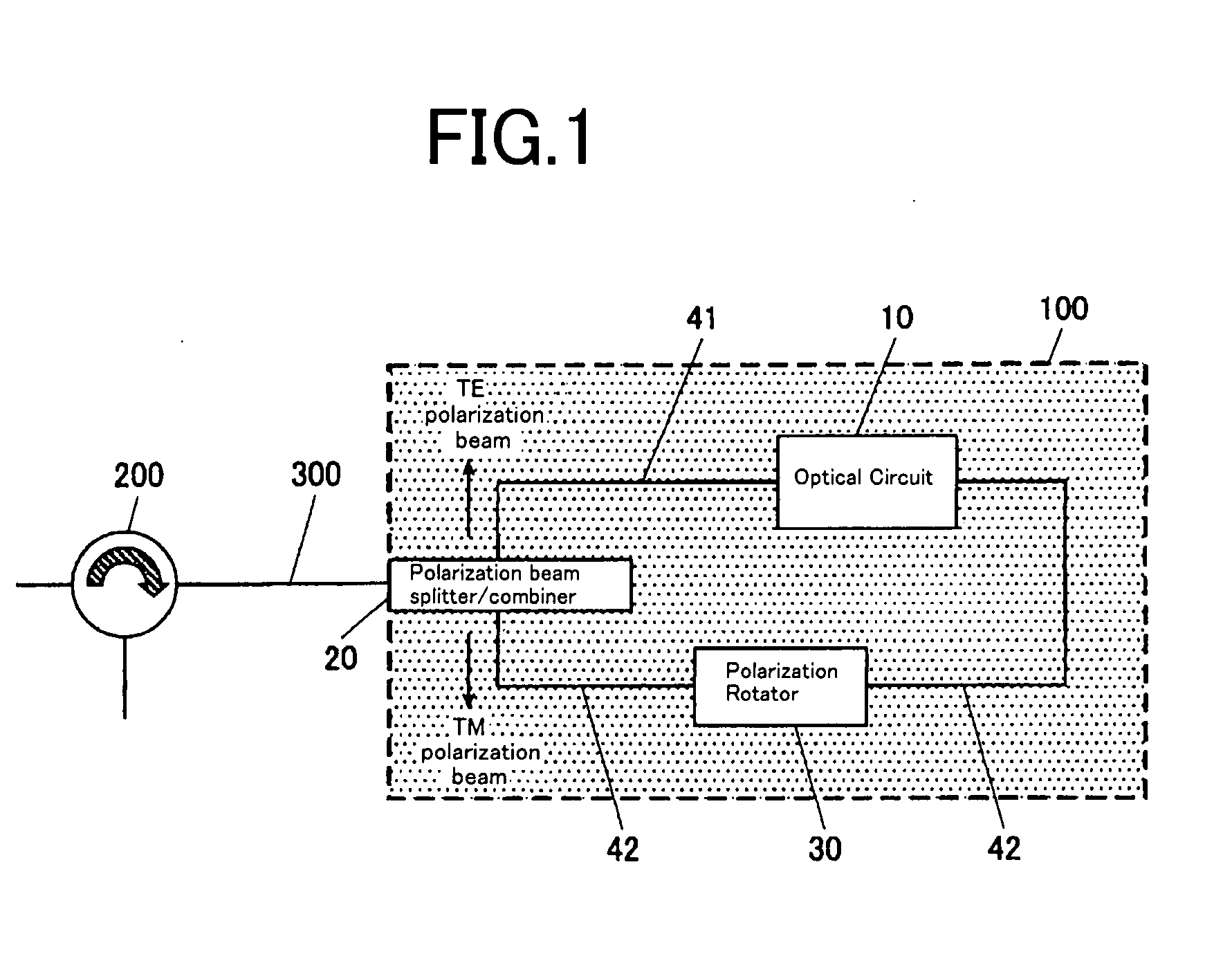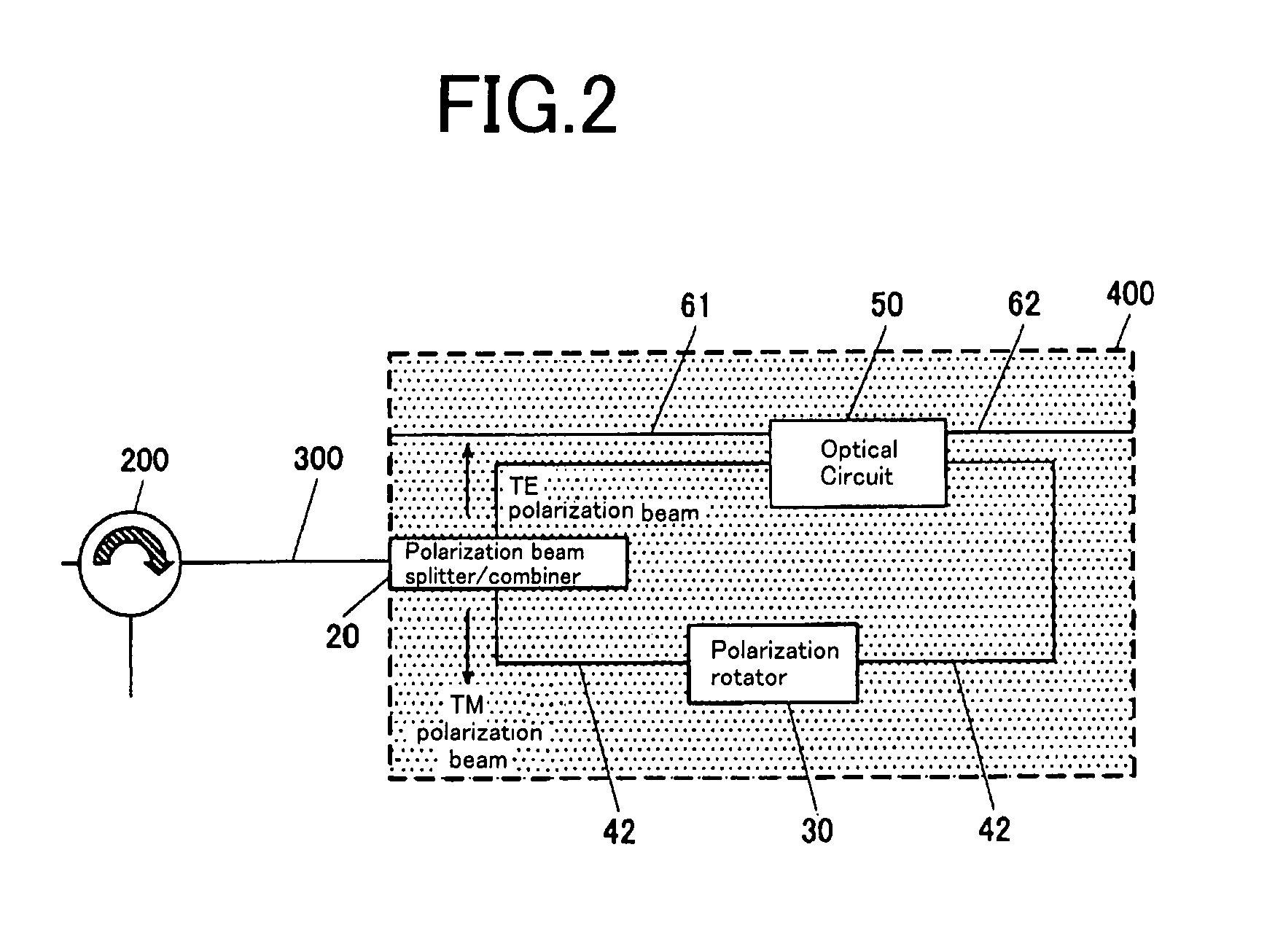Optical Circuit Device
a circuit device and optical circuit technology, applied in the field of optical communication, can solve the problems of polarization dependence of propagation characteristic, significant obstacle to practical application, and extremely large pdl (polarization dependent loss) of 4.5 db or more, so as to achieve the effect of reducing insertion loss and connection cost, reducing pdl, and not deteriorating the polarization extinction ratio
- Summary
- Abstract
- Description
- Claims
- Application Information
AI Technical Summary
Benefits of technology
Problems solved by technology
Method used
Image
Examples
first embodiment
[0093] The first embodiment of the present invention is described with reference to FIG. 1. First explanation is made about a configuration of an optical circuit device 100 of the present embodiment referring to FIG. 1. FIG. 1 illustrates the configuration of the optical circuit device 100.
[0094] As illustrated in FIG. 1, the optical circuit device 100 is a PLC and includes on a planar substrate, an optical circuit 10i a polarization beam splitter / combiner 20, a polarization rotator 30, optical waveguides 41 and 42, which are all monolithically integrated in one chip. The polarization beam splitter / combiner 20 formed on the optical circuit device 100 is connected to a circulator 200 via a SMF 300.
[0095] The polarization beam splitter / combiner 20 is connected to the optical circuit 10 via the two paths of the optical waveguides 41 and 42. Besides, the polarization rotator 30 is provided on the optical waveguide 42.
[0096] The optical circuit 10 is, for example, a dynamic gain equal...
second embodiment
[0102] Next description is made about a second embodiment of the present invention with reference to FIG. 2. First, the configuration of an optical circuit device 400 of this embodiment is described with reference to FIG. 2. FIG. 2 illustrates the optical circuit device 400 of this embodiment.
[0103] As illustrated in FIG. 2, the optical circuit device 400 of this embodiment is a PLC and has an optical circuit 50, a polarization beam splitter / combiner 20, a polarization rotator 30, optical waveguides 41 and 42, a monitor input waveguide 61 and a monitor output waveguide62, which are all monolithically integrated in one chip. In other words, the optical circuit device 400 is configured by adding the monitor input waveguide 61 and the monitor output waveguide 62 to the optical circuit device 100 of the first embodiment. In the description below, portions having the same functions as those illustrated in the above-described figure are indicated by the same numerals and description ther...
example 1
[0107] With reference to FIGS. 3 and 4, described as a specific example 1 of the above-described embodiment 1 is a configuration in which a dynamic gain equalizer having characteristic adjusting function by use of the thermo-optic effect is applied the optical circuit 10 of the optical circuit device 100 in FIG. 1. FIG. 3 illustrates the configuration of an optical circuit device 100A of this example.
[0108] As illustrated in FIG. 3, the integrated PLC-type optical circuit device 100A of this example is configured to include in the optical circuit device 100 of FIG. 1, a dynamic gain equalizer 10A as the optical circuit 10, a polarization beam splitter / combiner 20A as the polarization beam splitter / combiner 20 and a half wave plate 30A as the polarization rotator 30.
[0109] The polarization beam splitter / combiner 20A has optical couplers 21 as optical circuits having the polarization beam splitting and combining function cascaded at two stages in the same substrate. Besides, used as...
PUM
 Login to View More
Login to View More Abstract
Description
Claims
Application Information
 Login to View More
Login to View More - R&D
- Intellectual Property
- Life Sciences
- Materials
- Tech Scout
- Unparalleled Data Quality
- Higher Quality Content
- 60% Fewer Hallucinations
Browse by: Latest US Patents, China's latest patents, Technical Efficacy Thesaurus, Application Domain, Technology Topic, Popular Technical Reports.
© 2025 PatSnap. All rights reserved.Legal|Privacy policy|Modern Slavery Act Transparency Statement|Sitemap|About US| Contact US: help@patsnap.com



